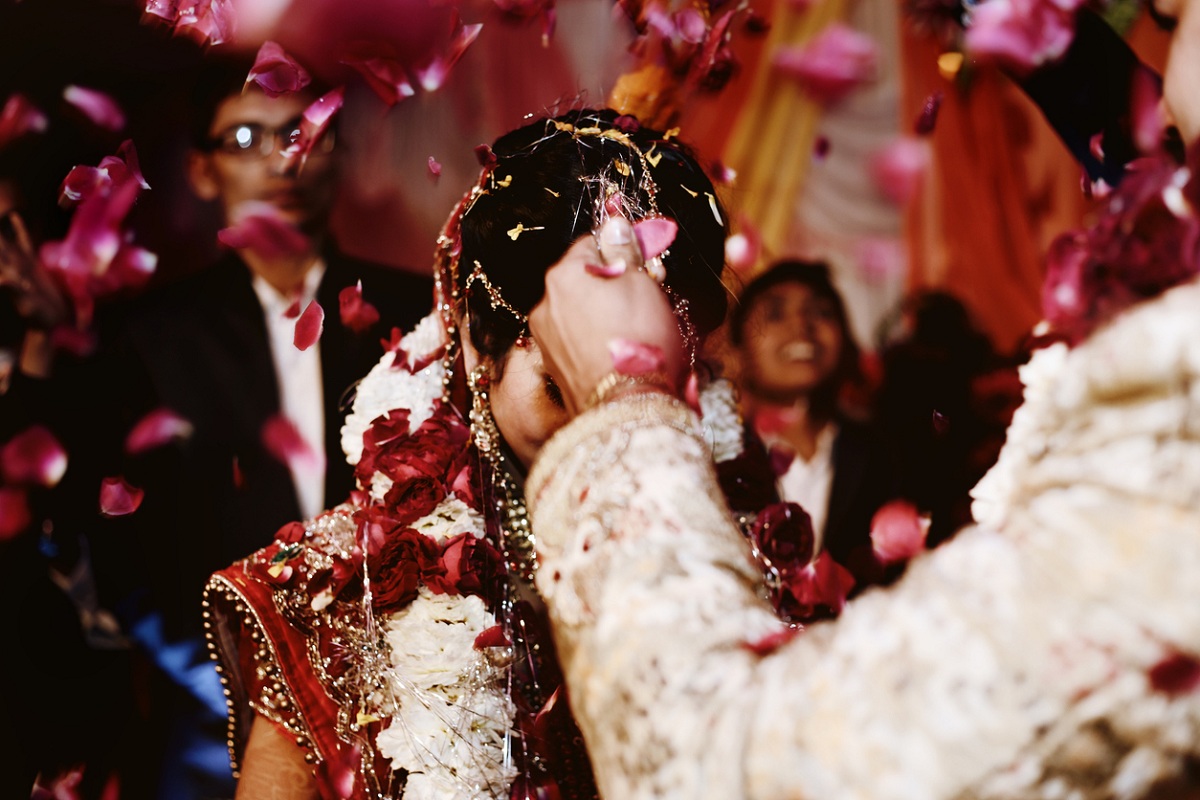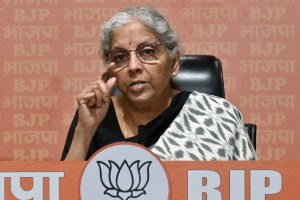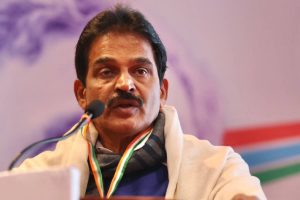Ihave a confession to make. I have spent the weekend binge-watching the just released Netflix reality show on Indian arranged marriages. In summary, it is a reality show about a Mumbai- based matchmaker (the redoubtable Sima Aunty) and her roster of well-heeled clients in India and abroad. And yes, I said bingeing – not cringing.
Yet, cringe-worthy is the term most Indians seem to use when describing the 10th most viewed show on Netflix in India last weekend. I have very little patience with this vilification campaign. The show has been condemned for being too classist: where is the real India in all this depiction of rich one-percenters, moans one critic.
Oh, c’mon, did you write letters to the editor about the depiction of the real world in Love Island? It is reality TV – for a particular slice of life. Too North Indian, says another angry Indian. Hey, there was a groom called Sekhar Jayaraman – did you miss him perhaps, because you are too focused on north Indians yourself? The matchmaker Sima Taparia’s remuneration is not revealed, says one miffed reviewer who also wonders whether she travel business class.
To him or her I would say, enjoy the ride, stop counting the fare. Another critic slams the show for being too open-ended – what happened to the couples, did the alliances last? Heck no, don’t you remember the sadness when we discovered what happened to the Von Trapp children after Sound of Music? Happy endings are not meant to be investigated. As expected, it has also stirred up a storm on Twitter for promoting fairskinned brides, for reinforcing stereotypes of Indian traditions and gender that deserve to die.
In short, India has reacted with disdain and anger. By contrast, my NRI friends have reacted to it with a mixture of amusement and nostalgia. ‘So bad, it is good’, said one friend still chuckling about Pradhyuman’s walk-in wardrobe of baby-sized clothes for his Radha and Krishna statues. ‘Honest depiction of Indians, warts and all’, said another weary-eyed friend after being riveted to all eight episodes. In fact, no other show in recent times has brought home the ideological and cultural divide between affluent urban India and Non-resident Indians like me.
While India is up in arms about this depiction of Indian life, NRIs are mostly cool and foreigners actually enthralled. A non-Indian friend I watched it with, made a perceptive remark about how the world perceives Indian arranged marriages. “It is good the world is getting to know that ‘Arranged’ does not equal ‘Forced’ and that young Indians actually have a choice in their life partners.” I could not agree more. In the murky world of Westernbias, honour killings and arranged marriages are interchangeable.
While Indians in India may feel that only a homegrown talent could have done justice to an Indian subject like arranged marriage, I feel that Netflix has given it an international platform as only Netflix (helped by the lockdown) can. And while not perfect in its narrative or structuring, the series goes on to make an important point – that arranged marriages are alive and well and that perfectly normal and attractive people seek intervention in this important area of life.
Sometimes the intervention takes the form of dating apps and at other times (and if you are lucky enough to be Indian) it can take the form of Sima Aunty with her infinite patience, her enormous database of bios and her aides ( an astrologer, a face reader and a life coach, no less). As the pivotal character I found Sima Taparia fascinating. Like all well brought up Indians, I can never be dismissive of aunties but this is an aunty with a multi-national empire. Under the folds of her colourful scarves and mild manners lurks razor-sharp business sense.
Married at 19 herself (she tells us so) Sima Aunty may not have done an MBA but she has all the classic weapons of a consultant; get other people to give the bad news, use local knowledge (she gets help from a Delhi aunty for a Delhi client) and always handle your clients with tact. Nothing fazes her – not even difficult clients like Pradhyuman or Akshay. After they have gone through 70-80 bio datas with no success and their families are boiling over with impatience – the always calm Sima Aunty says straight into camera ‘his problem is he is a very obstinate and stubborn boy’.
With the use of the word ‘ boy’ she has minimalized, even infantilized the problem. The boy will grow up, be corrected, there is hope. For her, as the eternal optimist and entrepreneur and for us as the audience. She trades in smiles ‘your smile will match his smile’ and good old fashioned terms like ‘nature’ which nobody seems to use these days– ‘his nature is so nice’ she says of a groom with a less than optimal salary.
How could you not adore her? In fact, the more I got involved with the show, I found myself drawn to its many relatable characters; the bumbling inarticulate Akshay who grows into love and hesitantly puts his arm around his fiancée at his engagement ceremony at the urging of his family, the business entrepreneur who confesses her vulnerability when she talks about being fat-shamed, the glamorous Guyanese Indian who thinks caste would play a part in Indians rejecting her because her ancestors were plantation labour immigrants… they are all real and complex characters with back stories that Sima must take into account when finding a partner for them.
What I also found very interesting about the show was the NRI angle: Indians in India have ranted about how regressive NRIs are, “what are these NRIs feeding their children with?” writes one enraged reviewer. Yes, India has moved on and certainly more young people in urban India are finding their own life partners, but the situation that NRI millennials find themselves in is unique and has to be empathized with. Their parents bring them up with large doses of Indian culture and make them proud of their Indian heritage.
This is a particular trait of the Indian community – no matter how long ago they left India, the link with India remains strong. Whether they are African Gujaratis who left India four generations ago or as is the case in this show, Guyanese of Indian origin, now settled in the US, the identification with being Indian is strong. Yet we have to remember that these young people live in a foreign eco-system. They do not meet enough Indians as part of their education or work life. The desire to marry other Indians (also a part of being the highest earning, most educated immigrant group in the US), leads to Sima Aunty’s services being called upon.
In my book that is both logical and laudable. Finally, what this show achieves, especially for an international audience, is that it makes clear what marriage means in the Indian context and how different it is from the way it is perceived in the West. While marriage is about love between two individuals in the West, in India and amongst Indians who live outside India, marriage is still regarded as a family affair. The phrase ‘from a good family’ is one of the most repeated on the show – both as an ask as well as an offering on CVs.
Families get lots of screen time – they are always part of consultations with Simi Aunty and present at initial meetings between potential partners. This, to me, makes it different from any other dating show and also uniquely Indian. From mothers like Preeti who kept talking about how her BP will only be cured once she gets Akshay married to a good girl, to Vyasar’s single mother who brought him up under trying circumstances, the Indian mother is always a presence.
To please her and by extension, the family by getting married is a societal obligation. However, Indian families seem to go beyond that – there is genuine affection and concern for the grown up child looking for a partner. And joyous relief when success is achieved. And the show’s ultimate triumph is that it understands and celebrates that.
(The writer lives in London and is the author of East or West: An NRI mother’s manual on how to bring up desi children overseas)










